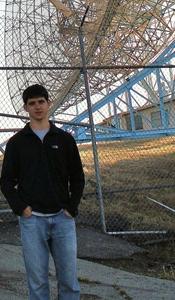ESP Biography
NOAH SENNETT, Stanford junior studying physics.
|
Major: Physics College/Employer: Stanford Year of Graduation: 2012 |

|
Brief Biographical Sketch:
I'm a senior studying physics at Stanford University. I've done research in many different areas, including condensed matter, cosmology, high energy, and surface physics. When I'm not too busy talking about math, physics, or other equally geeky pursuits, I'm an avid tutor, football fan (go Redskins!), and jujitsu practitioner. Past Classes(Clicking a class title will bring you to the course's section of the corresponding course catalog)M1742: How to Defend Yourself Against Probability in Splash! Fall 2011 (Oct. 29 - 30, 2011)
Have you ever heard a statistic that sounded unbelievable? We'll teach you how to interpret these numbers in a meaningful way. We will discuss several fundamental concepts of probability (which you already use without even thinking about it!) in an approachable, quantitative way. We'll then use these tools to show you how to ask the important questions that will you from being tricked by statistics.
S1091: The Origins of Our Universe in Splash! Fall 2010 (Nov. 13 - 14, 2010)
Starting with a brief introduction to basic astrophysics and cosmology, we'll trace the evolution of the Universe backwards to the limits of modern physics. We'll cover major epochs of the growth of the Universe, including inflation, Big Bang Nucleosynthesis, reionization, the formation of the first galaxies and stars, up to the beginning of life on Earth. We'll also discuss other important aspects of the today's most popular cosmological, paradigm, including the existence of dark matter and dark energy, and thoughts on the end of the Universe.
M206: Excursions into Chaos in Splash! Fall 2008 (Oct. 18, 2008)
This course will discuss the mathematics of Chaos theory. It will introduce the idea of sensitive dependance, how it applies to mappings, and the idea of the Butterfly Effect. Other topics may include applications, fractals, attractors, and analyzing time series
|
|
